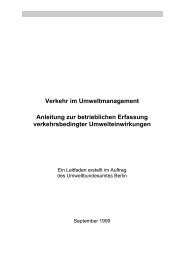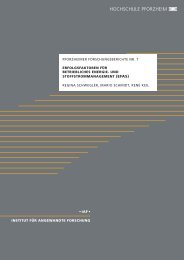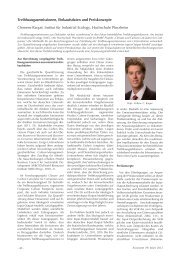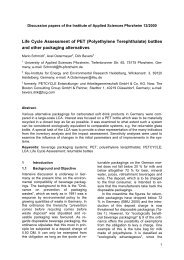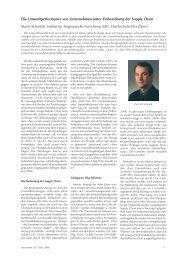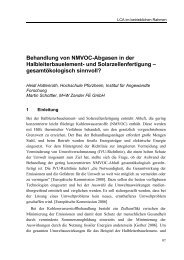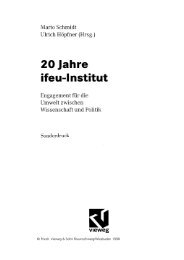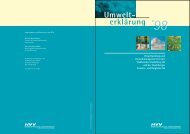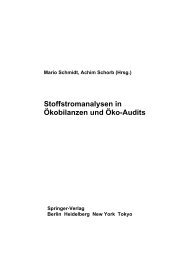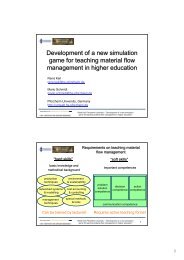article in press - und Umweltmanagement - Hochschule Pforzheim
article in press - und Umweltmanagement - Hochschule Pforzheim
article in press - und Umweltmanagement - Hochschule Pforzheim
Create successful ePaper yourself
Turn your PDF publications into a flip-book with our unique Google optimized e-Paper software.
(POR)ARTICLE IN PRESS4M. Schmidt / Environmental Impact Assessment Review xx (2005) xxx–xxxNaturalenvironmentPrimary materialsWastes for disposalInduction(POE)ProductionTransactionTransactionDistribution(POS)Closed-loopeconomyTransformationTransformationTransactionTransformationConsumptionReductionCollectionFig. 1. A simple model for closed-loop material flow management (after Dyckhoff et al., 2004, p. 4).environmental impacts occur as a result and how expensive an <strong>in</strong>dividual process andhence the entire closed-loop management becomes.However, the transformation processes are only one important po<strong>in</strong>t of approach. Forthem to function <strong>in</strong> a real economic system the transactions are equally significant. Dyckhoff(2000) therefore placed the transactions of distribution (po<strong>in</strong>t of sale), collection (po<strong>in</strong>t ofreturn) and <strong>in</strong>duction (po<strong>in</strong>t of entry) between the processes of production, consumption andreduction (see Fig. 1), but these will not be discussed further <strong>in</strong> this paper.If we wish to evaluate the systems not only economically but also ecologically, thosematerials that have not yet played any role <strong>in</strong> the economic operation of a companybecause they did not cost anyth<strong>in</strong>g and were ma<strong>in</strong>ly available without restriction must betaken <strong>in</strong>to account. Look<strong>in</strong>g at a transformation process <strong>in</strong> quite general terms, materialsenter the process as an <strong>in</strong>put, while other materials leave it as an output. Under economicaspects only the most important materials were taken <strong>in</strong>to account <strong>in</strong> the past, <strong>in</strong> otherwords those that caused costs or earned revenues, i.e. had a market price.On the <strong>in</strong>put side we traditionally consider factors that are connected with costs andreduce the profit, and reducts (wastes) when revenues are connected with them and they<strong>in</strong>crease the profits. Reducts on the <strong>in</strong>put side may for <strong>in</strong>stance be wastes <strong>in</strong> the case of awaste <strong>in</strong>c<strong>in</strong>eration plant. The waste <strong>in</strong>c<strong>in</strong>eration plant earns its money by accept<strong>in</strong>g (andconvert<strong>in</strong>g) these wastes. On the output side, on the other hand, we consider the products –they <strong>in</strong>crease the profit. Wastes, however, reduce the profit if elim<strong>in</strong>at<strong>in</strong>g them costsmoney. Ecologically relevant flows are only taken <strong>in</strong>to account if they are connected withcosts, e.g. scarce environmental factors, or wastes that have to be elim<strong>in</strong>ated actively.Houtman (1998) extends this view. He also considers material flows on the <strong>in</strong>put andoutput sides that do not cause any costs, but might harm the environment (Fig. 2). Firstlythere are success-neutral <strong>in</strong>puts and outputs that are subject to volume restrictions.Admittedly they do not cost anyth<strong>in</strong>g, but due to restrictions imposed by authorities for



